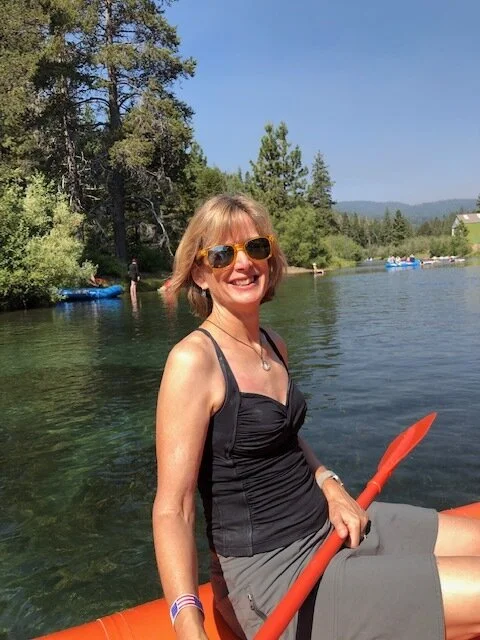Longer holds
/The image above is one my teachers, Kathryn Budig, reminding us to be playful (hint, hint .... next week's theme!)
This past week we incorporated longer holds into our asana practice. With lots of vinyasa, and a nice variety of twists and balancing poses, we sprinkled in about 6 longer holds ( 1 minute each ).
When we can give ourselves time and space to just be in a pose, and we can resist the urge to get out of the pose, then we can start to see our mental and physical states transform. We might enter the pose fragile, noisy, distracted .... and we can end the pose quiet in the mind and free in the body. My teacher, Darren Rhodes, calls this "shape shift to state shift". So with these shapes, your breath, your focus & intentions ... you can shift your state to be who you want to be and how you want to be today.
We opened with ujjayi breath, then a minute of dog to plank followed by 2 minutes of half salutations. Onto surya namaskar, a playful kick up to handstand, and then deep into our longer holds. I'm pretty sure everyone would agree that the highlight of class was the minute hold in boat pose! Class concluded with pigeon, camel and students could pick their finishing posture then onward to a deep, integrating savasana to experience letting go as a beautiful counter to the strong asana practice. Namaste, Lynn
"You lack nothing" Earth flow
/Class this week was a deep, strong Earth flow. We focused on getting into the legs, feet, hips ... into that grounded strength. The theme: "you lack nothing" reminds us that we can always show up, learn, try, grow, but we don't need improving.
Yoga is a state where nothing is missing. The real work of yoga is to create a deeper place of ease inside. In class we experienced both letting go and feeling grounded & supported. So we could feel that this day lacks nothing, this moment lacks nothing, this pose lacks nothing.
Students were encouraged to be themselves, not a perfected or improved upon version of themselves. They were invited to call on their strength and acceptance. We started with breath and students thought about what they wanted to create with their practice as they set an intention. We warmed the body with surya namaskar followed by strong standing poses including humble Warrior 1 and humble Warrior 2. Core work and crow occupied the middle of class. Onward to parvottanasana and revolved triangle. Once students felt grounded in their strength, we twisted and opened any stuck places students might be harboring feeling of insecurity, inadequacy, unworthiness. Then we moved into balancing poses and backbends. Throughout, the contemplation was "how can I experience letting go while equally tapping into the experience of feeling supported and grounded?" This Earth flow touches on concept of the first Chakra, the root chakra, muladhara, which include a sense of safety, security, belonging and home. When balanced, you feel stability in your life.
I bow to the place in you where the entire universe dwells; I bow to the place in you that is love, light, peace and truth; when you are in that place in you & I am in that place in me ... we are one. Namaste, Lynn















